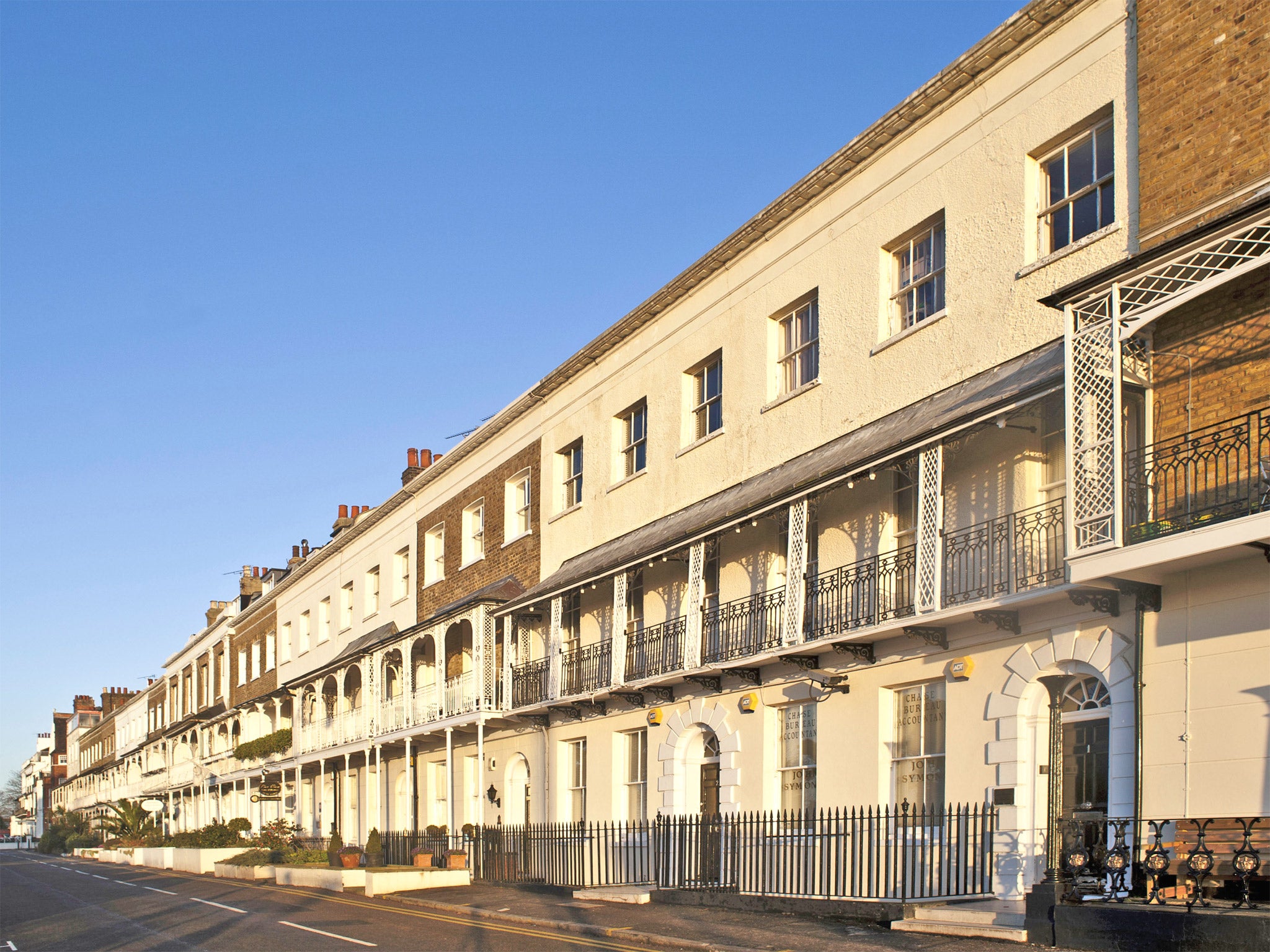Southern comfort as house prices rise beside the seaside
North-South divide reflected in changes to property values, Halifax survey shows

Your support helps us to tell the story
From reproductive rights to climate change to Big Tech, The Independent is on the ground when the story is developing. Whether it's investigating the financials of Elon Musk's pro-Trump PAC or producing our latest documentary, 'The A Word', which shines a light on the American women fighting for reproductive rights, we know how important it is to parse out the facts from the messaging.
At such a critical moment in US history, we need reporters on the ground. Your donation allows us to keep sending journalists to speak to both sides of the story.
The Independent is trusted by Americans across the entire political spectrum. And unlike many other quality news outlets, we choose not to lock Americans out of our reporting and analysis with paywalls. We believe quality journalism should be available to everyone, paid for by those who can afford it.
Your support makes all the difference.Seven miles of beaches, 40 minutes on the train into London and the world's longest leisure pier are proving difficult to resist for Britain's recession-hit house buyers. Southend-on-Sea, once the favourite seaside spot for England's Georgian-era tourists, is now the best-performing place in the UK housing market.
New research by the Halifax, based on its own housing data, has recorded a rise of 14.8 per cent in the Essex town's property prices. Over the past year the average selling price for a house in Southend has gone from £172,782 to £198,418.
The performance is almost matched by other London commuter towns in the South-east, which have experienced the UK's highest price rises in 2012.
Basingstoke in Hampshire has seen the second-biggest rise with a gain of 14.7 per cent. And three other commuter towns – Rochester, St Albans and Dartford – continue to reflect the economic influence of London.
Durham in the North-east is the only town in Halifax's top 10 largest risers that isn't in, or on the margins of, South-east England. All of the top 10 show average price rises above 11.5 per cent.
The widening gulf between the South-east and the rest of the UK's flatlining regional economies is also exposed when it comes to the worst property-performing locations. Craigavon in the north of Co Armagh in Northern Ireland has experienced the worst slump, with prices falling by 18.4 per cent over 2012. The average Craigavon property is now £91,530, down from £112,172 last year. Although the fall in Wishaw in central Scotland was 12.5 per cent, the average house in the North Lanarkshire town can now be bought for £87,410 – the lowest level of any UK property measured by Halifax's housing data.
Four towns in Scotland and four in the North of England are ranked in the 10 worst performers. Grays in Thurrock, 20 miles east of London, is the only town in the South-east to make it into the worst performers of 2012 with a price fall of 7.3 per cent.
Martin Ellis, Halifax's housing economist, said: "Nationally, conditions in the housing market have been largely unchanged over the past 12 months with little overall movement in either house prices or sales for the second consecutive year."
But he added that this wider picture concealed considerable local differences, with a number of towns and cities recording significant changes in house prices over the past 12 months.
"Several towns within easy commuting distance of the capital feature in the list of top performers, whilst the majority of towns that have fared worst in house price terms are outside southern England, where economic conditions have generally been less favourable," he said.
According to Halifax's current forecast, broad stability in house prices nationally are expected for the coming year, when the North-South divide is also likely to continue.
The bank's optimism is not, however, shared by the Office for National Statistics, which recently indicated that house prices in the South-east could be slowing. Central London price growth is also expected to slow following the introduction of the seven per cent stamp duty rate for homes valued at more than £2m.
Winners and losers: UK house prices
Towns with biggest price rises
1. Southend On Sea, Essex, average house price £198,418 (+14.8% on last year)
2. Basingstoke, Hampshire, £220,320 (+14.7%)
3. Rochester, Kent, £184,908 (+13.3%)
4. St Albans, Hertfordshire, £371,131 (+13%)
5. Dartford, Kent, £209,557 (+13%)
Towns with biggest price falls
1. Craigavon, Northern Ireland, £91,530 (-18.4%)
2. Wishaw, Scotland, £87,410 (-12.5%)
3. Chorley, Lancashire, £125,156 (-9.4%)
4. Carlisle, Cumbria, £123,100 (-9.3%)
5. Wirral, Merseyside, £160,375 (-9.3%)
Join our commenting forum
Join thought-provoking conversations, follow other Independent readers and see their replies
Comments